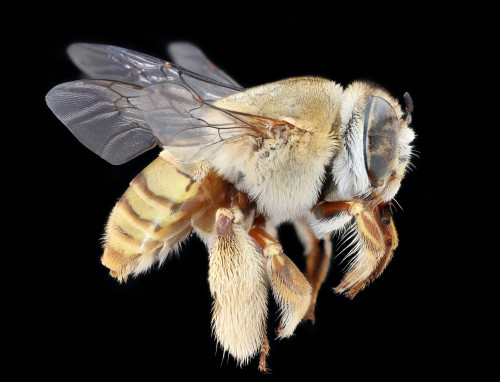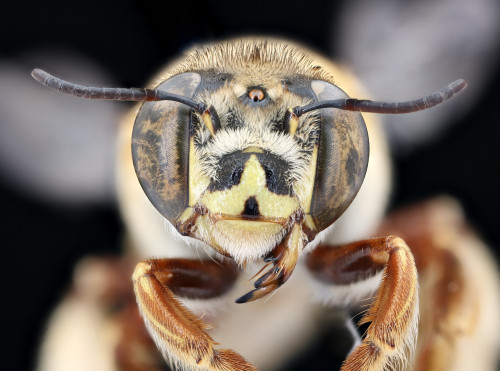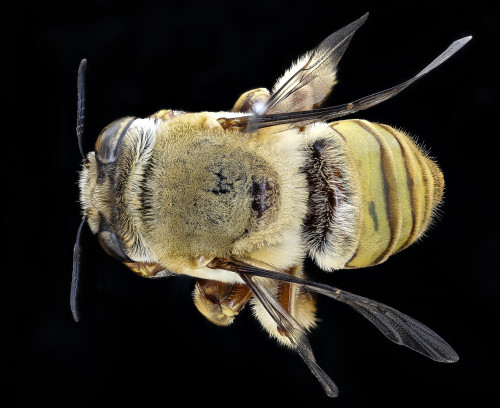usgsbiml: A lovely fuzzy Centris (C. aethyctera). Collected by Tim McMahon in Costa Rica. Compact
usgsbiml: A lovely fuzzy Centris (C. aethyctera). Collected by Tim McMahon in Costa Rica. Compact and relatively large, the 200+ species of Centris all live in the New World. Unlike almost all of the other bees, they hover, their flight form looks something like this (written in Centris): Tree! Flowers! Zip, zip. This one? NO. Nothing. zip zip. This one? NO. Nothing. zip zip. This one? NO. zip zip. This one? NO. Nothing. zip zip.This one? NO. Nothing. zip zip.This one? NO. Nothing. zip zip. This one? YES, POLLEN! scrape, scrape, comb, pack. zip zip. (I call this the Black Friday foraging strategy (If you don’t know what “Black Friday” is, good for you)). As you can imagine, these bad boys are often hard to catch. Patience is necessary, waiting for the Centris to return to your target flowers and swinging your net reflexively as your eye informs your arm without any intervening brain processing. This particular species runs down the West Coast of Mexico to expand to all of Central America but not expanding into South America. Like most bee species, something limits its global range and like most species why those limits exist are unclear. Photo by Anders Croft. -- source link
Tumblr Blog : usgsbiml.tumblr.com
#reblog#centris aethyctera#centris#apidae#hymenoptera#insect#arthropod#invertebrate


